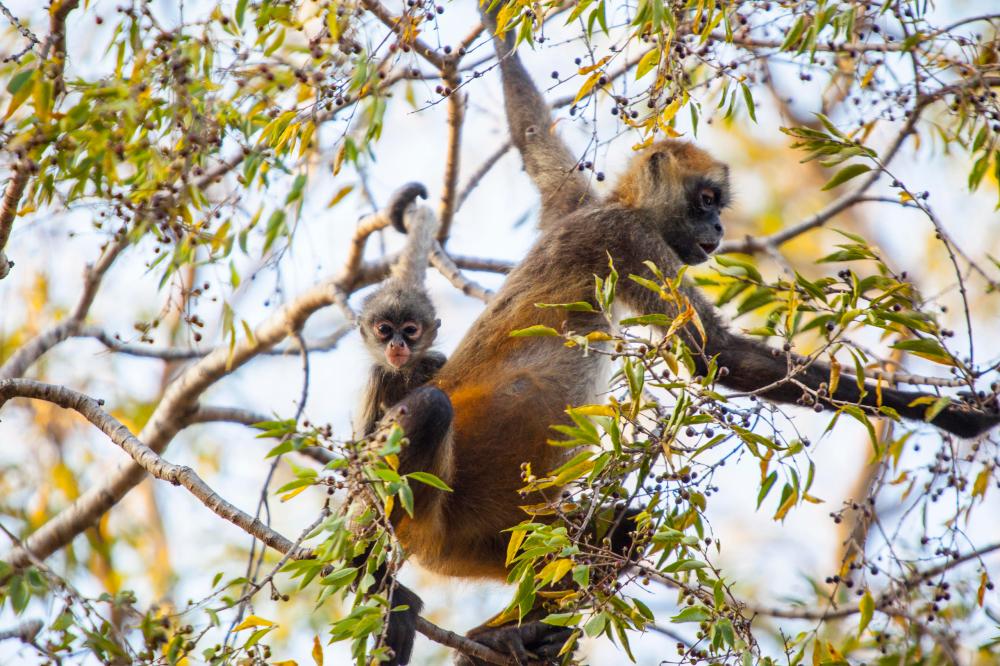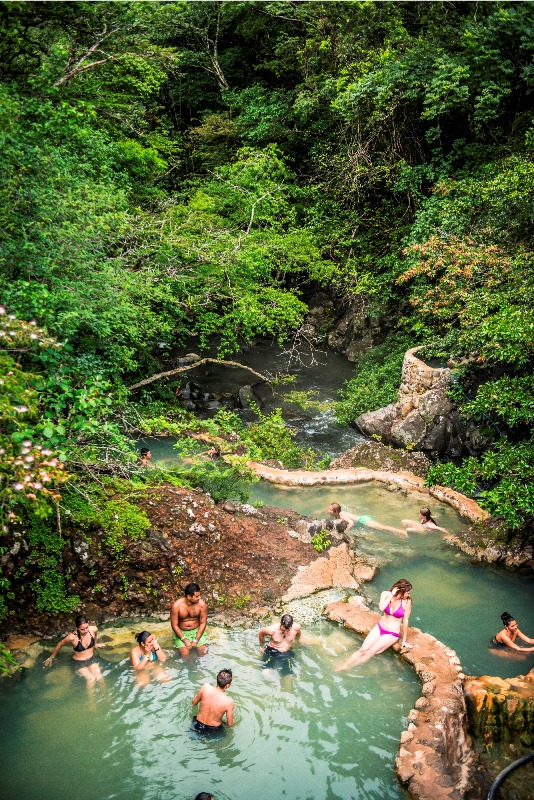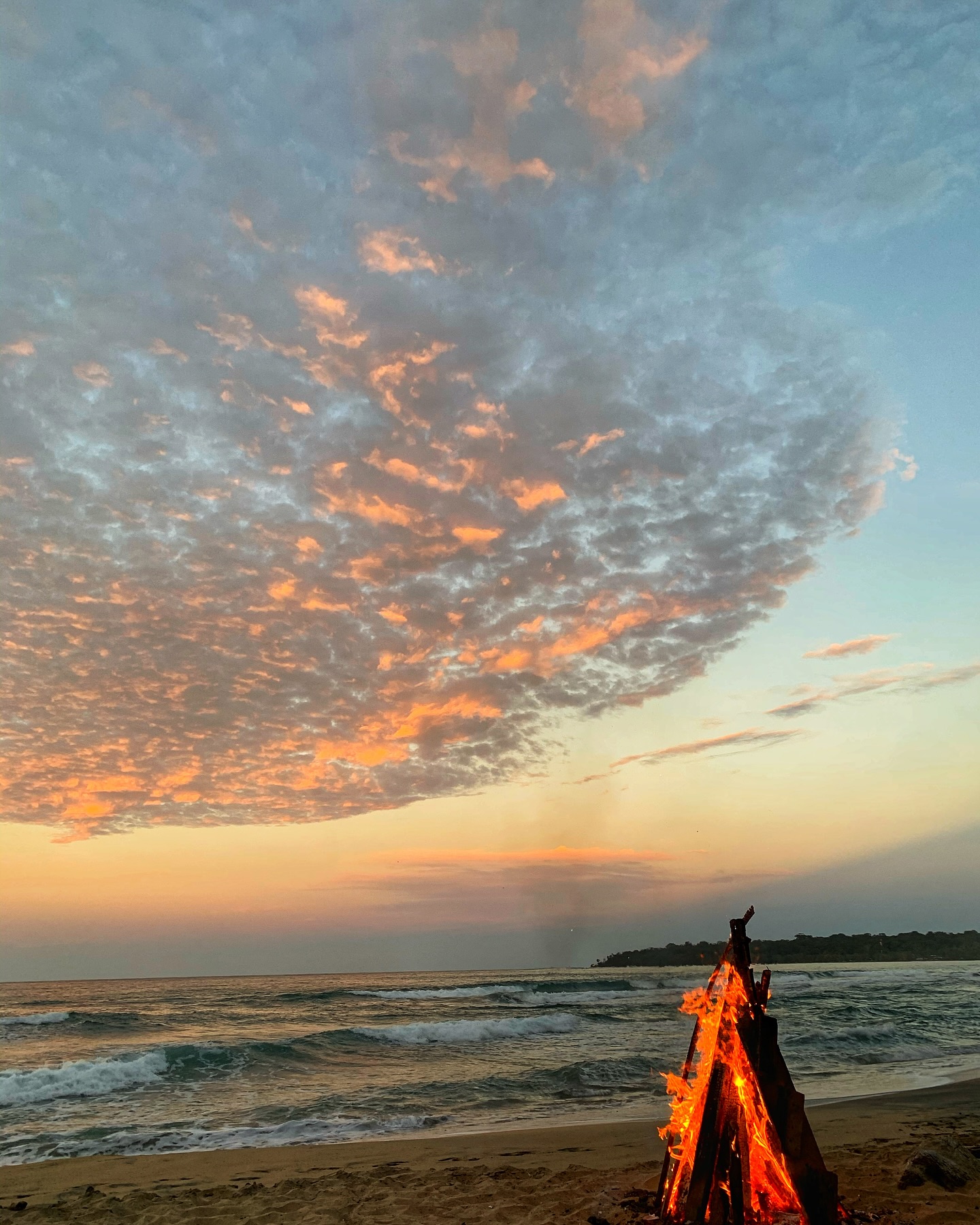If seeing a sloth in the wild is high on your Costa Rica travel wish list, you don’t need to head to the Caribbean or deep southern rainforest to make it happen. At Hotel Hacienda Guachipelín, located on the edge of Rincón de la Vieja National Park in Guanacaste, travelers have the rare chance to spot these iconic creatures in their natural habitat. While sloths may be more elusive in tropical dry forests, guided tours and lush Green Season conditions reveal hidden corners where they quietly thrive. This guide explains when and where to see sloths in Guanacaste, plus fascinating sloth facts and how your stay supports vital conservation efforts.
Fascinating Facts About Sloths
Sloths are among Costa Rica’s most beloved and unusual animals. These slow-moving, tree-dwelling mammals have adapted brilliantly to life in the treetops.
Here are a few fun (and slightly bizarre) facts about them:
- They only poop once a week. Sloths descend from the safety of the trees—at great personal risk—just once every 5–8 days to defecate at the base of a tree. National Geographic explores some of the theories behind this odd ritual.
- They grow entire ecosystems in their fur. Their dense fur hosts algae, fungi, and insects, which help with camouflage and may provide nutrients. Research shows that sloth fur harbors unique symbiotic organisms.
- They’re surprisingly good swimmers, using a slow-motion breaststroke to move between rivers and treetops.
- They digest incredibly slowly—a single leaf meal can take up to a month to pass through their system.

The Green Season is a great time to see sloths in Guanacaste, Costa Rica
Sloths in Guanacaste: What to Know
Sloths may look like slow-moving plush toys, but they’re also evolutionary marvels that have adapted to thrive in tropical forests across Central and South America.
Costa Rica is home to two species:
- The three-toed sloth (Bradypus variegatus), active during the day and easier to spot
- The two-toed sloth (Choloepus hoffmanni), larger and nocturnal, often hidden during daylight hours
These tree-dwelling herbivores live their entire lives in the canopy, feeding primarily on leaves and fruit. With low metabolic rates, they conserve energy by moving slowly and digesting food over days or even weeks. Their slowness is their survival strategy, making them less detectable to predators.
According to studies in protected lowland rainforest areas, population densities for sloths can range from 2 to 8 individuals per hectare (or 200–800 per square kilometer), depending on species, food availability, and forest health. In drier or transitional forests, like those found in Guanacaste, these densities are generally lower, but sightings still occur. Areas with mature tree cover and strong conservation management, especially during the Green Season (June to October), when leaf growth increases and ecosystems become more welcoming to arboreal species.

Sloths in Their Natural Habitat at Rincón de la Vieja
What makes spotting sloths around Hotel Hacienda Guachipelín so meaningful is that it occurs within their natural, wild habitat—not a sanctuary or artificial environment.
Rincón de la Vieja National Park protects over 34,000 acres of tropical dry forest, transitional rainforest, and volcanic terrain. While much of the area is characterized by deciduous forest that dries out during the dry season, riparian zones—forests along rivers and streams—remain humid year-round and serve as crucial habitat corridors for wildlife like sloths, monkeys, and birds.
During the Green Season (June to October), these pockets of moist forest expand, providing better feeding and shelter conditions for sloths, especially in the Las Pailas and Santa María sectors of the park. Trails that wind through these areas—often accessed through guided tours from the lodge—give guests an authentic opportunity to observe sloths in the wild. These undisturbed and protected settings have sustained them for generations.
This is not a zoo-like encounter. This is a glimpse into the delicate, slow-motion rhythm of nature.
Best Time and Places to Spot Sloths Near Hacienda Guachipelín
Your best chance to see sloths at Hacienda Guachipelín is between July and October, when rainfall revives the forest and food is abundant.
The best areas include:
- Trails near the Las Pailas sector of Rincón de la Vieja National Park
- Transitional forests on horseback riding tours and river canyon hikes
- Private reforested areas within the lodge’s extensive grounds
Join a guided nature tour or speak with the front desk to arrange an early morning hike, when sloths and other wildlife are most active.

More Than Just Sloths: A Biodiversity Hotspot
While spotting a sloth is a magical experience, Rincón de la Vieja National Park is teeming with other fascinating wildlife that makes every hike or horseback ride feel like a true safari.
During your stay at Hacienda Guachipelín, you’re likely to see:
- White-faced capuchin monkeys swinging through the trees in search of fruit
- Howler monkeys echoing through the forest canopy with their iconic calls
- Agoutis, small rodent-like creatures often seen foraging near the forest floor
- Coatis, curious relatives of the raccoon with long ringed tails
- Armadillos, deer, and even elusive wildcats like ocelots or jaguarundis
- A wide variety of tropical birds, including motmots, toucans, and hummingbirds
This rich biodiversity is part of what makes the area so important—and so rewarding for nature lovers and photographers.
Pro Tips for Spotting a Sloth
Because sloths are so well-camouflaged, here are a few expert tips to increase your chances of finding one:
- Book a guided tour – Guachipelín’s local naturalist guides know where sloths have been spotted before and are trained to recognize the subtle movements that most people miss.
- Go early – The early morning hours are cooler and quieter, making it more likely to spot wildlife before they settle into the high canopy for the day.
- Look up and stay still – Sloths rarely move quickly, so patience and scanning the upper branches can reveal a sleeping sloth curled into a mossy nook.
- Watch for telltale signs – A change in the texture of the leaves, a rounded shape in a crook of the tree, or a hanging limb may indicate a sloth’s presence.
Even if you don’t spot one on your first outing, trust that the experience of searching—and the many other creatures you’ll encounter—will be just as memorable.

Combine Sloth Spotting with Relaxation
After a morning in the forest, return to the lodge for a well-earned soak at the Rio Negro Hot Springs or detox with a volcanic mud bath beneath the trees.
Fuel up with a nourishing meal at La Hacienda Restaurant, where local ingredients and traditional flavors complete the experience.
For families, the on-site butterfly garden and reptile house offer great wildlife interactions that pair beautifully with sloth searching.
Support Sloth Habitat Through Sustainable Travel
By choosing Hacienda Guachipelín, you’re directly supporting eco-tourism and habitat preservation. The hotel’s long-standing sustainability efforts include solar power use, water treatment, and native tree reforestation—efforts that help create safer environments for sloths and many other species.
Plan Your Slow and Spectacular Sloth Safari
For wildlife lovers hoping to spot a sloth in the wild, the best time to see sloths in Guanacaste, Costa Rica, is during the lush and vibrant Green Season. And there’s no better place to start your search than Hacienda Guachipelín—where volcanic adventures, jungle treks, and moments of quiet discovery await.
Book your stay and discover the slow-moving magic of one of Costa Rica’s most iconic animals.









